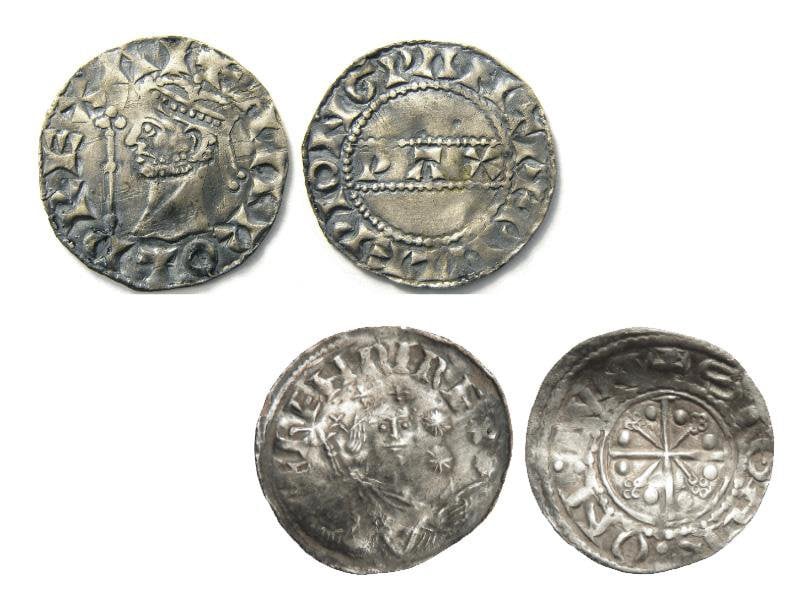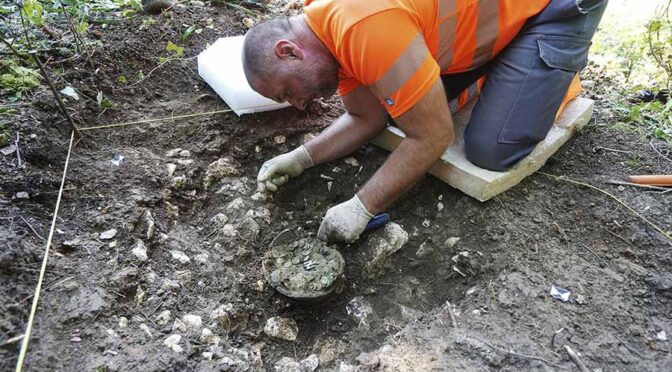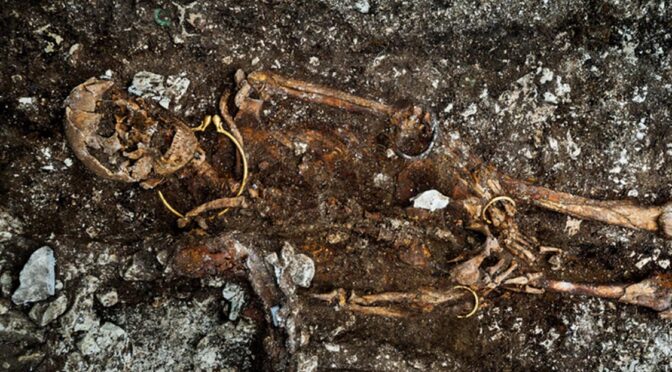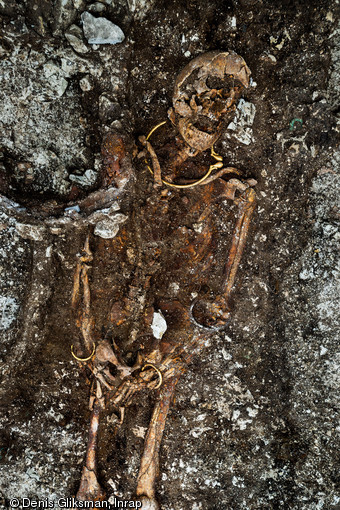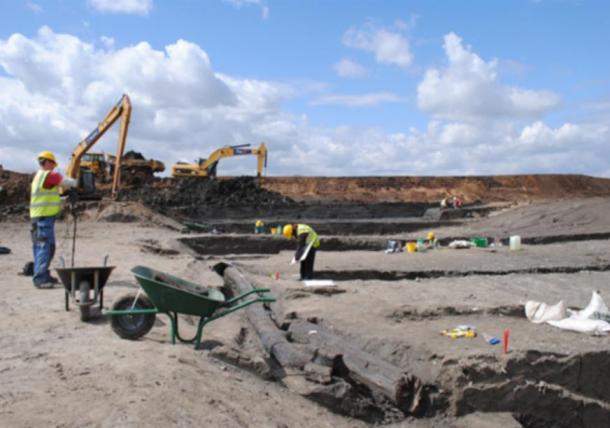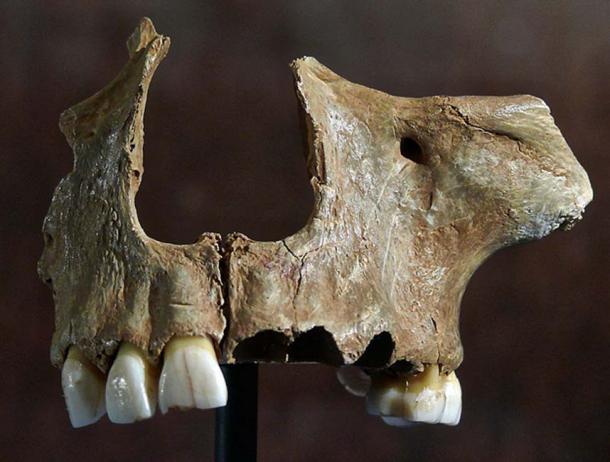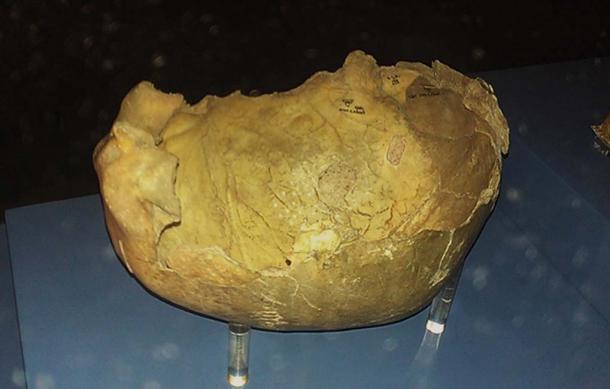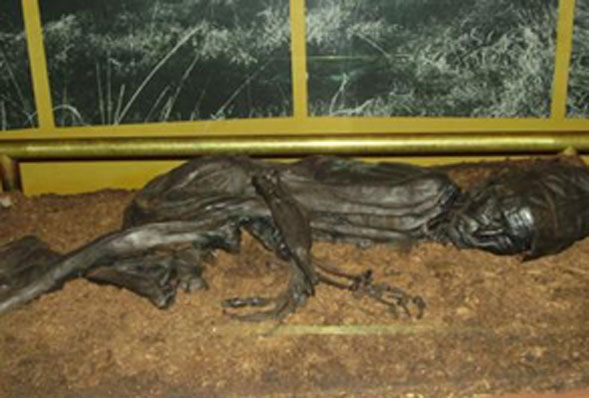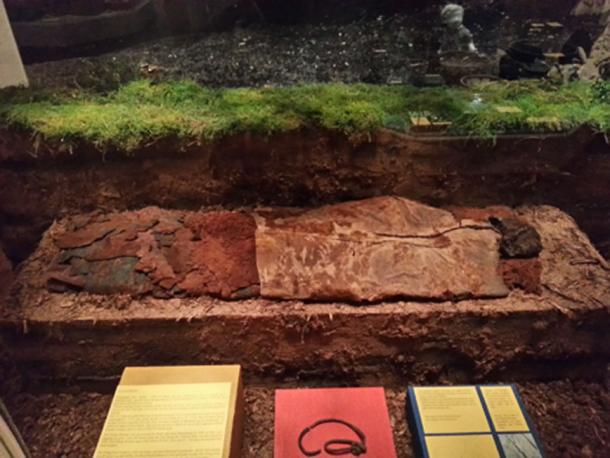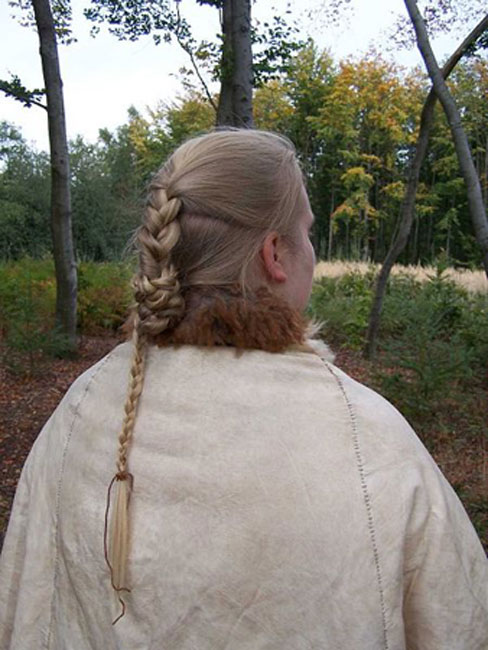‘Folded’ iron sword found in a Roman soldier’s grave was part of a pagan ritual
Archaeologists in Greece have discovered a 1,600-year-old iron sword that was folded in a ritual “killing” before being interred in the grave of a soldier who served in the Roman imperial army.

The discovery of the folded sword was “astonishing,” because the soldier was buried in an early church, but folded sword was part of a known pagan ritual, said project co-researcher Errikos Maniotis, a doctoral candidate in the Department of Byzantine Archaeology at Aristotle University of Thessaloniki in Greece.
Although this soldier, who was likely a mercenary, may have “embraced the Roman way of life and the Christian religion, he hadn’t abandoned his roots,” Maniotis told in an email.
The soldier’s burial is the latest finding at the site of a three-aisled paleochristian basilica dating from the fifth century. The basilica was discovered in 2010, during excavation ahead of the construction of a subway track, which prompted researchers to call the ancient building the Sintrivani basilica, after the Sintrivani metro station. The station is in the northern Greek city of Thessaloniki, which was an important metropolis during Roman times.
The basilica was built over an even older place of worship; a fourth-century chapel, which might be the oldest Christian church in Thessaloniki, Maniotis said.

In the seventh century, the church was damaged and only poorly renovated before it was eventually abandoned in the eighth or ninth century, Maniotis said. During recent excavations, archeologists found seven graves that had been sealed inside. Some of the graves contained two deceased individuals, but didn’t have any artifacts.
However, an arch-shaped grave contained the remains of an individual who had been buried with weapons, including a bent spatha — a type of long, straight sword from the late Roman period (A.D. 250-450).
“Usually, these types of swords were used by the auxiliary cavalry forces of the Roman army,” Maniotis said. “Thus, we may say that the deceased, taking also into consideration the importance of the burial location, was a high-ranking officer of the Roman army.”

The archaeologists still have to study the individual. “We don’t know anything about his profile: age of death, cause of death, possible wounds that he might have from the wars he fought, etc.,” Maniotis said.
However, they were intrigued by his folded sword and other weapons, which included a shield-boss (the circular center of a shield) and spearhead.
So far, the folded sword is the most revealing feature in the grave. “Such findings are extremely rare in an urban landscape,” Maniotis said. “Folded swords are usually excavated in sites in Northern Europe,” including in places used by the Celts, he said.
This custom was also observed in ancient Greece and much later by the Vikings, but “it seems that Romans didn’t practice it, let alone when the new religion, Christianity, dominated, due to the fact that this ritual [was] considered to be pagan,” Maniotis said.
The bent sword is a clue that the soldier was a “Romanized Goth or from any other Germanic tribe who served as a mercenary (foederatus) in the imperial Roman forces,” Maniotis wrote in the email.
The Latin word “foederatus” comes from “foedus,” a term describing a “treaty of mutual assistance between Rome and another nation,” Maniotis noted.
“This treaty allowed the Germanic tribes to serve in the Roman Army as mercenaries, providing them with money, land and titles. [But] sometimes these foederati turned against the Romans.”
The archaeological team recently found ancient coins at the site, so they plan to use these, as well as the style of the sword’s pommel, or the knob on the handle, to figure out when this soldier lived, Maniotis noted.
“The soldier’s armament [weapons] will shed light to the impact that the presence of the community of foreign mercenaries had in the city of Thessaloniki, the second greatest city, since the fall of Rome and after Constantinople, in the Eastern Roman Empire.”
Mosaic and cemetery
The discovery of the ancient basilica has revealed other ancient artifacts. Archaeologists led by Melina Paisidou, an associate professor of archaeology at the Aristotle University of Thessaloniki, have also excavated the building’s beautiful mosaic floor, Maniotis said.
The mosaic shows a vine with birds on its stalks, including the mythical phoenix with a halo that has 13 rays at its center. Only seven other depicted birds have survived, but the archaeological team posits that there were originally 12 birds, and that the mosaic is likely an allegorical representation of Christ and the 12 apostles, Maniotis said.



